This is a dissertation chapter on Supply Chain Management:
1. Introduction
In today’s competitive environment, a company’s performance does not depend upon its capabilities alone. In the past decades, what had increased was: outsourcing, supply base reduction and consolidation. This has increased the reliance of buyers on their suppliers and has become the popular manufacturing strategy for companies. It is because of the increased dependence, that how main suppliers perform once in terms of quality, delivery, costs and services, affects the buying company’s performance. For instance, part shortages contributed to long production delays for Boeing’s 747 and 737 airplanes and a resulting loss of over $1 billion (McClenahen, 1998). Therefore, it is critical for a successful firm to understand a supplier’s capabilities and performance potential.
As the fourth-largest automaker in the world, &”Toyota is committed to continuous improvement, looking forward to new tomorrows. Built-in car navigation system is getting more popular all around the world since it can provide a more convenient and safer environment for drivers. The aggregation of mapping data, for the navigation systems from Denso, is now available in almost every Toyota model in the UK.&” (toyota.co.uk) Toyota’s navigation system supplier: беDenso, a $16.2 billion Japanese corporation, is the fourth largest independent automotive component supplier in the world. Denso’s vehicle navigation systems perform complex spatial data processing and were used by car manufacturers such as Toyota, Jaguar and Cadillac.&” (denso.co.uk) Moreover, Toyota is not the only buyer of Denso; but Denso is the only navigation supplier to Toyota.
In this assignment, I will use supply chain theory to analyse how Toyota has managed its relationship with Denso and how Toyota can manage its supply chain better.
2. Historical background to the cooperation between Denso and Toyota
2.1 Navigation system in Denso:
Denso was established on December 16, 1949, and is a global supplier of advanced technology, systems and components. Denso employs 85,000 people in 27 countries worldwide. (globaldenso.com) Denso, launched its first navigation system in 1987, and is one of the few companies in the world that develops global vehicle navigation systems and supplies them to automakers in Japan, Europe and North America. Denso’s intelligent transport system products and services, represent the three aspects of technology: беsensing and communication between vehicles-adaptive cruise control; communication between vehicles and the highway infrastructure-electronic toll collection system, and communication between vehicles and the global telecommunications grid-telematics car navigation, fleet management system&”. (globaldenso.com)
2.2 Toyota in the UK
Toyota was established by Sakichi Toyoda in 1918 and the net revenues of Toyota in 2002 was D14,316,874 millions. As far as Toyota (GB) PLC is concerned: &”it is the importer and distributor for Toyota vehicles in the UK and is responsible for sales, marketing, after-sales and customer satisfaction.
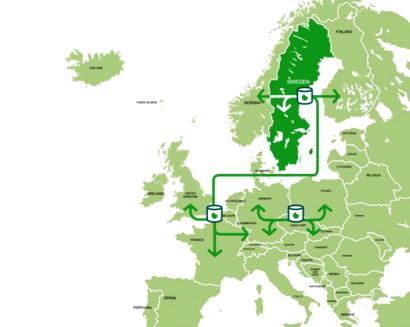
Sales are managed throughout England, Wales, Scotland and Northern Ireland by a network of over 252 Toyota dealers. The statement of Toyota (GB) PLC is: 75% of vehicles produced in the UK are exported to Europe, 20% are sold in the UK and 5% are exported to the rest of the world.&” (toyota.co.uk)
3. Literature review
Supply chain management can be defined as беmanaging the entire chain of raw material supply, manufacture, assembly and distribution to the end customer&”. (Jones, 1989) A well organized supply chain contains: purchasing and supply management; physical distribution management; material management, and logistics. (Slack, 1995) In the case of Denso I will focus on three aspects: product quality, customer satisfaction and delivery at the right time. This is because a navigation system should have a high standard of quality and reliability. In addition, Denso, as a supplier, must be able to deliver its products to its buyer, Toyota, at the right time. Toyota must have an excellent relationship with Denso in order to cooperate well. In this assignment I am going to use these three different aspects to analyse the supply chain relationship between Toyota and Denso.
4. Product Quality
Poor quality components, for instance, can delay delivery of the finished product. As a result, costs will be increased by quality failures. Supplying the right quality of products and services will have a significant effect on whether the operation itself can provide a quality advantage. Also, quality will affect the delivery speed and reliability. (Slack, 1995) Not only Toyota but also Denso will raise their costs if the Denso’s products quality is not reliable. In order to ensure the quality, Denso is encouraged to ensure that they take the responsibility themselves to provide a &”right-first-time&” level of quality. Furthermore they are required to certify to Toyota that quality levels are met.
Ahire et al (1996) suggested that the effective execution of TQM should also be related to an efficient implementation of product design, employee training, and employee relations within the supplier’s firm. For the supplier, Denso has a Total Quality Control (TQM) System to ensure every finished product meets Toyota’s quality levels. Satellite navigation systems must be tested over a thousand times on the product line in order to ensure high quality products. Also, Denso has its own suppliers. Denso must have a good relationship with them to ensure receiving reliable raw materials. Moreover, its employees should be well-trained and maintain the relationship with Toyota.
At the buyer’s level, Toyota has invested time, money and effort into helping Denso reach the required quality levels. This is because Toyota wants to get reliable parts from its long-term reliable partner. There are three Denso manufacturers in the UK, which are located in Herts, Shropshire and Shipley. As a purchasing manager for Toyota, visiting these three Denso’s factories regularly would be the manager’s main job. Also, Toyota must get involved in what is happening in Denso’s factories.
There are four points that Toyota’s buying manager must notice when visiting Denso’s manufactories:
4.1. First, the buying manager must check that Denso has an adequate total quality control system.
4.2. After realizing the quality control systems do exist in Denso, the next mission of the manager is to ensure the system processes are suitable and essential.
4.3. Third, the manager then can check that the processes are followed properly in the factory.
4.4. Finally, the products future development is an important subject in the product quality control, thus the manager must get deeply involved into this issue.
Toyota also must get feedbacks about its navigation systems from customers and take this into consideration when producing present products or developing new products. All products’ function and quality are for satisfied customers. If customers cannot feel satisfaction after purchasing, that will not be a successful product no matter how good quality it is. The following point discusses customer satisfaction.
5. Customer Satisfaction:
&”Attaining a high level of customer satisfaction usually requires more than providing a high-quality product.&” (Hendricks and Singhal, 1997) Meeting a customer’s pre-purchase expectations is an important aspect of customer satisfaction that has been described in the marketing and service operations management literature. (Anderson and Sullivan, 1993; Reeves and Bendar, 1994) The satellite navigation systems are high technological products. In addition, the latest satellite navigation system on Toyota’s vehicle costs £1250. With this high price, customers would expect a lot before and after purchasing. Now they can use the navigation system to locate everywhere they want to go in the most parts of UK; they can get latest news if they want. Customers expect the system they have bought is impeccable and will no defects. If it was a defective product, customers would want to have a guarantee from Toyota. Also, customers will expect more service from the navigation system: wider and more detailed maps; ask the computer to find out a short cut; vocabulary and voice recognition function; three-dimensional displays and built-in Web browser. Toyota and its supplier Denso must understand customer’s basic needs and their expectation from a navigation system.
It is suggested that greater use of human resource management, process quality management, and product design performance can increase customer satisfaction in some situations. (Adam, 1994) Carkey reported on the 5th December 2002: &”Toyota has updated its UK satellite navigation system to include mapping for more roads than were covered by the original version, and it now takes in Northern Ireland as well, with detailed street coverage for Belfast city centre.&” (carkeys.co.uk) However, this is just the beginning; Toyota has to satisfy its customers by improving both product and service. As far as a navigation system is concerned, it is after sales service that is more important than anything. Customers will be satisfied if Toyota can update the latest map or repair any computer mistakes. Toyota must train its technologist regularly to ensure they can solve all problems; improve its customer service system; produce the product which customers really want. All these improvement need fully technologic support from Denso. On the other hand, Toyota must also have had a whole after-sales support from Denso.
6. Delivery at the right time
The system Toyota has implemented efficiently in managing its suppliers’ delivery is the Just-In-Time (JIT) system. The origins of JIT system was established by Taiichi Ohno and Shigeo Shingo while they developed the &”Toyota Production System&”. &”One of the major contributors to Toyota’s success was the lower cost structure achieved through aggressive management of inventory levels. JIT focuses first and foremost on the elimination of waste and non-value added activities of all kinds in production, including unnecessary product movement.&” (James, 1987) Also, Toyota often asks its suppliers to deliver its parts in a fixed time, usually less than 24 hours.
For example, if a Toyota driver wants to build in a new navigation system, it should not take more than five working days. Thus, from receiving the customer’s car; delivery it to the Toyota factory; build into the system and testing on the produce line; end by sending vehicle back to the customer should be finished impeccably within five working days. Time is a really important issue here. However, the navigation model which customer wants could be very varied. If this particular model is not available in Toyota’s warehouse, Toyota must order this from Denso, with the right time delivery. Not only Denso itself but also Toyota must struggle to achieve this target. Repair and service of vehicles, for instance, usually have to be carried out on the same day. This is because the garage carrying out the repair does not know which parts are required until the vehicle is up on the ramp.
Moreover, Toyota makes its supply chain more flexible by using the Web. &”The Web allows Toyota dealers to send requests for parts to its suppliers as the demand arises.&” (bbc.co.uk) For instance, if Toyota experiences a high demand for a certain model, it can notify its supplier and get the product delivered to its factory quickly and with a minimum amount of human intervention or paperwork. Through this new system, both Denso and Toyota can execute their supply chain more efficiently.
7. Conclusion:
In summary, Hahn et al. (1983) state that companies benefit from placing a larger volume of business with fewer suppliers using long-term contract. Furthermore, &”through a well-developed long-term relationship, a supplier becomes part of a well managed supply chain which will have lasting effects on the competitiveness of the entire supply chain.&” (Choi and Hartley, 1996) Denso is the main and the only navigation system supplier of Toyota and they have been in cooperation together for a long time. In addition, the relationship between Toyota and Denso is stable and reliable. JIT system in Toyota reveals the buyer-seller linkage which epitomizes a small supplier scale and long-term relationship.
Recently, Toyota officials described a &”next-generation just-in-time logistics system&” and computer software that allows planners to create a &”virtual production line&” as key factors in the company’s compressed manufacturing cycle time. Parts are delivered to assembly lines 24 times each day, on average, in small lots, by trucks that run fixed routes to several suppliers on each trip. To make its suppliers work more efficiently, new technology should be implemented in Toyota. Although Toyota set its parts orders on the Web which can save time and administration fees, it is never enough. Since the internet field is very mature now, Toyota can connect or even control its suppliers through the internet. For instance, Toyota’s managers can get the latest information from Denso and give some feedback immediately. The time lag will be minimized through this internet system. Moreover, Toyota drivers can use this system to check the working process of their vehicles. Observably, this can let Toyota manage its supply chain and customer services effectively and efficiently.
The challenge for Toyota in next decade will be to balance the benefit of supply chain management with the need to connect new suppliers. The system that Japanese companies use is: buying companies often own a certain amount of shares in suppliers. This system might cause too close a relationship between buyers and sellers in order to get the best deal. Toyota also has this sort of problem and has to find out the solution by getting new and competitive supplier. The quality of China’s navigation system suppliers, for example, might be too poor to meet Toyota’s level. But, in two or three years, the navigation systems which are made in China will be very attractive: not only with good quality but reasonable price. Defiantly, this change will happen, because Japan had gone through the same evolution process. If China’s quality improves then, Toyota must consider the possibilities of buying its navigation systems from other better suppliers rather than staying with Denso.
This is just a sample dissertation (dissertation example) chapter on Supply Chain Management. If you need a high-quality custom writtendissertation feel free to contact our professional custom dissertation writing company which provides college and university students with custom Undergraduate, Master’s, MBA and Ph.D. dissertations, thesis papers and research proposals at an affordable cost. Any dissertation topics. Any deadlines. Get professional dissertation writing help right now!
Leave a Reply Cancel reply




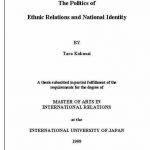 Psychology masters thesis proposal sample
Psychology masters thesis proposal sample Les mots de liaison dans une dissertation proposal
Les mots de liaison dans une dissertation proposal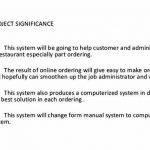 Online order system thesis proposal
Online order system thesis proposal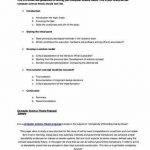 Project proposal for computer science student thesis
Project proposal for computer science student thesis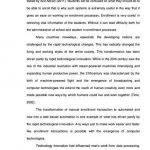 Medical records system thesis proposal
Medical records system thesis proposal






